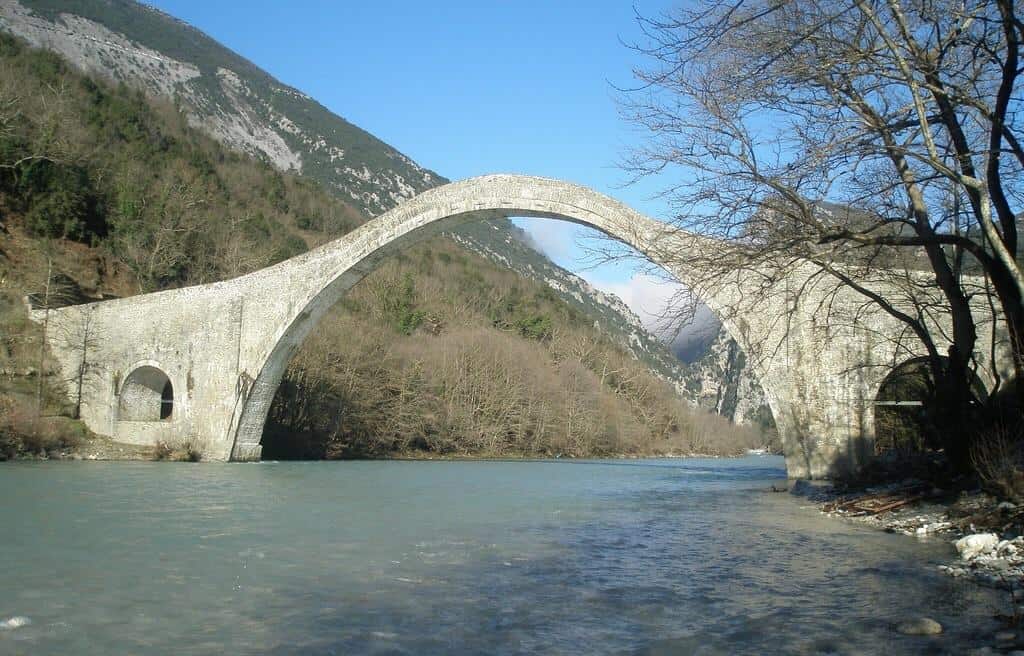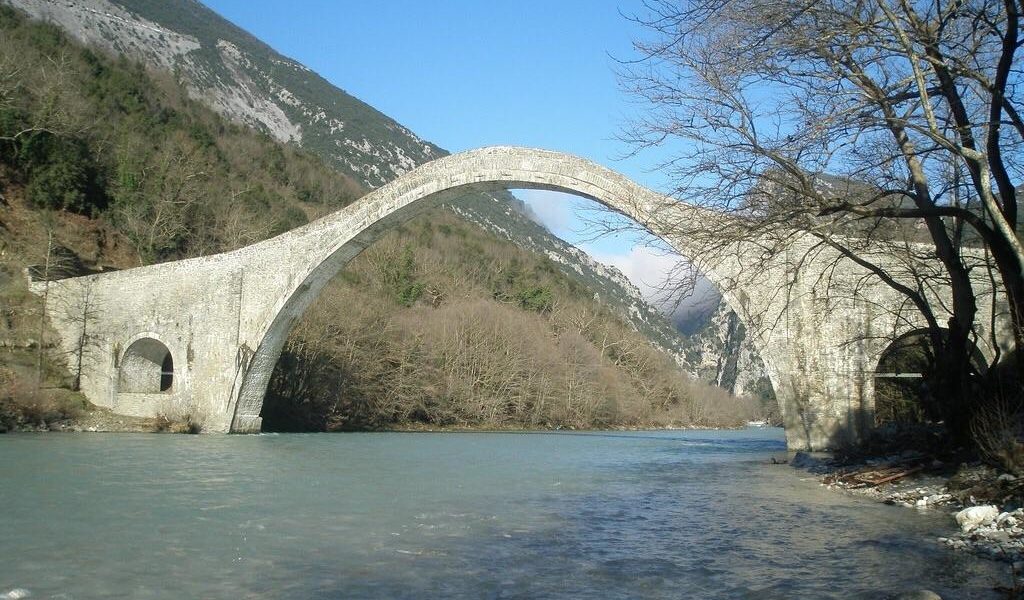The Plaka Bridge, over Arachthos River, was the largest stone one-arch bridge in Greece and the Balkans, and the third largest one-arch stone bridge in Europe. Its stone arch measured 40 meters and curved majestically over the river, 21 meters above the water. Constructed by Constantinos Bekas in 1866, after two unsuccessful attempts by other builders, the bridge stood for 148 years surviving German bombings during the Second World War only to be claimed by a flash flood in February 2015. It was considered one of the region’s most important landmarks.
The bridge was built upon the order of Ottoman Sultan Abdülaziz, and was completed in 1866 under the supervision of the famous local builder Constantinos Bekas. In the six years prior to its construction, two attempts were made by other builders.
Both had proven unsuccessful, with the bridge collapsing during construction. In 1863 it collapsed on the very day of its inauguration, presumably in front of a stunned audience.

During World War II, the bridge was bombed by the Germans near its center. It came out unscathed with only minor damages which were quickly repaired by the locals using cement. The bridge’s structural stability, however, was questioned by experts.
The bridge had two small 6-meter-wide relief arches, but its apex thickness of only 1.5 meters was considered too small. Consequently, a 15 cm crack had developed in a region where there was a concentration of horizontal stresses. The bridge nearly collapsed during heavy rains in 2007. A restoration was considered but surprisingly not taken.
The inevitable end came on first February 2015. A flash flood caused by heavy rainfall caused the Arachthos River to rip the bridge's foundations from the riverbanks leading the central section of the bridge to collapse and be washed away. Restoration of the bridge was announced shortly after.
With strong public support, the work to recover the Plaka Bridge began almost immediately following the collapse of the bridge in February 2015.
Extensive interdisciplinary research and documentation was carried out to understand the cause of the collapse and to design a comprehensive restoration programme that would stabilise the remaining elements of the bridge, address structural issues posed by river flow and allow reconstruction of the bridge using the original, fallen fragments wherever possible with the careful selection of appropriate, additional materials when necessary.
“Research and documentation formed a solid foundation for this project which aimed to define and repeat the traditional techniques that were used in its construction”, the Jury noted.
The project is remarkable in that it is the very first reconstruction of a stone-bridge in Greece, and is one of few similar projects worldwide. The wide range of expertise and knowledge which has been recovered about this unique project has been enriching for the scientific community, with results disseminated through publications and conferences at an international level.
Natural, traditional materials were used in its restoration while traditional construction methods were recovered and demonstrated during the project. The restored monument has been reintegrated into its outstanding natural landscape as well as in the social and cultural life of the community.
“This project is an example of how a structure that follows the principle of utility and construction becomes beautiful.
The completed restoration of the Plaka Bridge contributes to the enhancement and conservation of the landscape and of the environment”, the Jury stated.

